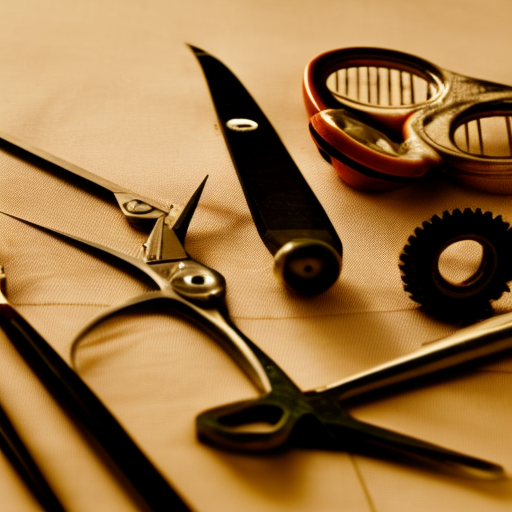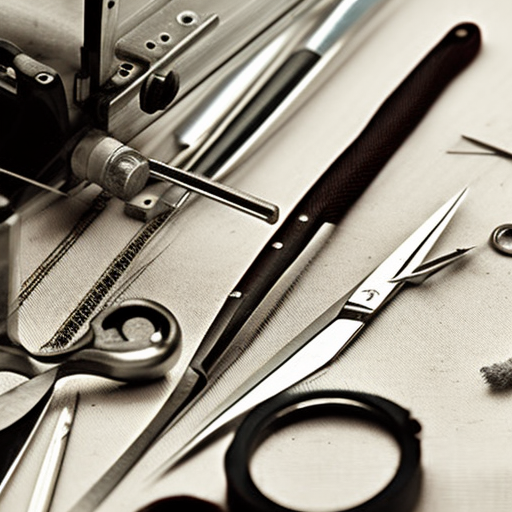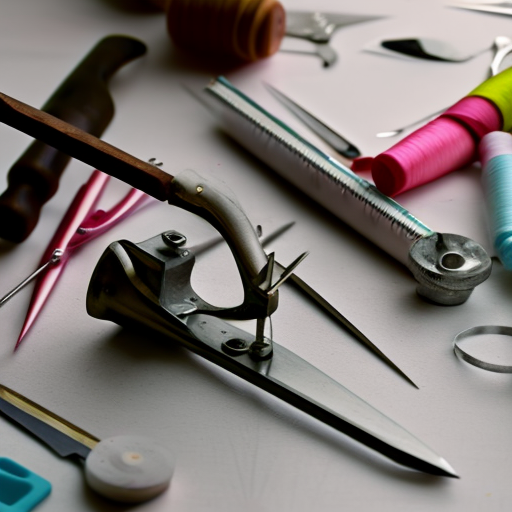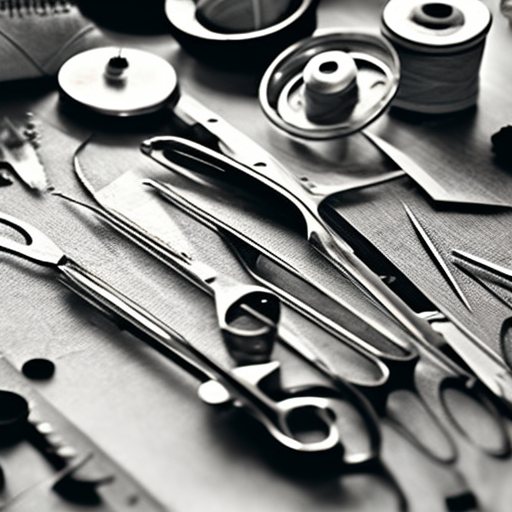
Whether you are a professional sewer or a beginner, having the right sewing tools and equipment is essential for successful and efficient sewing projects. From cutting and measuring to stitching and finishing, each tool serves a specific purpose and makes sewing a much easier and enjoyable task.
1. Scissors
Scissors are an extremely important tool in any sewing kit. They come in different sizes and shapes, each designed for a specific purpose. Fabric scissors have a long sharp blade that glides through the fabric, whereas embroidery scissors have a pointed tip for delicate cuts. It is important to have a separate pair of scissors for cutting paper and other materials to prevent dulling the blades.
2. Sewing Machine
A sewing machine is a must-have for any serious sewer. It makes tasks such as sewing hems, attaching zippers, and stitching much faster and more accurate. There are different types of sewing machines available, from basic mechanical ones to sophisticated computerized machines with various stitch options. Choose a machine that suits your sewing needs and budget.
3. Seam Ripper
Mistakes happen, and a seam ripper is a tool that can help fix them. It has a small pointy tip that helps in cutting and removing stitches without damaging the fabric. It is particularly useful when sewing intricate or delicate designs.
4. Measuring Tools
Accurate measurements are crucial in sewing, and having the right tools makes it easier to achieve. These include a measuring tape for body measurements, a clear ruler for marking and cutting straight lines, and a cloth ruler for measuring curved and irregular shapes.
5. Pins And Needles
Pins and needles are essential for keeping the fabric in place while sewing. There are different types of needles for various fabrics, such as leather needles for thicker fabrics and quilting needles for multiple layers of fabric. It is also important to have a pincushion for storing and organizing needles.
6. Iron And Ironing Board
Pressing fabric is a necessary step in sewing to achieve a professional and polished finish. An iron and ironing board are essential for this purpose. Make sure to choose an iron with adjustable heat settings and a sturdy ironing board for better results.
7. Bobbins, Thread, And Bobbin Case
Bobbins are small spools that hold the thread on the underside of the fabric. They come in different sizes and should match the type of sewing machine being used. Thread, on the other hand, is the material that forms the stitches. It is important to have a variety of thread colors and types, such as polyester or cotton, to match different fabrics and projects. A bobbin case is a small compartment that holds the bobbin in place inside the sewing machine.
8. Thimble
A thimble is a small, protective shield that fits on the middle finger of the hand used for pushing the needle while hand sewing. It helps prevent needle pricks and makes it easier to push the needle through thick or tough fabrics.
9. Marking Tools
Marking tools are essential for transferring patterns and marking fabric before cutting. These include tailor’s chalk, fabric markers, and tracing wheels. It is important to use marking tools that can easily be removed after sewing.
10. Sewing Box Or Organizer
To keep sewing tools and equipment organized and easily accessible, invest in a sewing box or organizer. It can be a simple plastic box or a more intricate sewing basket with compartments and pockets for organizing different tools and supplies.
With these sewing tools and equipment in your arsenal, you are now ready to take on any sewing project with confidence. Make sure to maintain and care for your tools to ensure they last a long time and continue to provide you with perfect stitches and finished products.





Love this helpful guide! Wow, this is really useful information!
This is a great resource to help sewers choose the right tools and understand their uses!